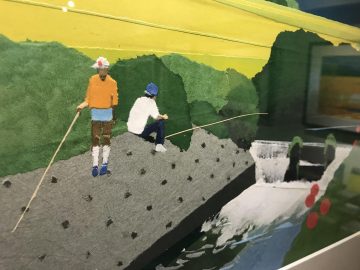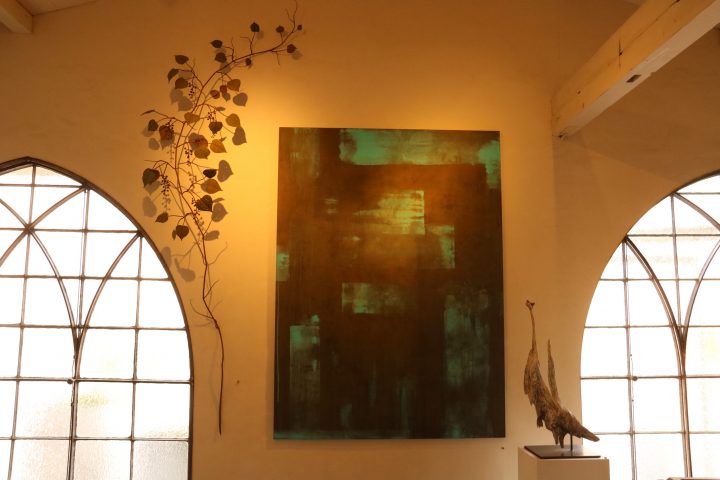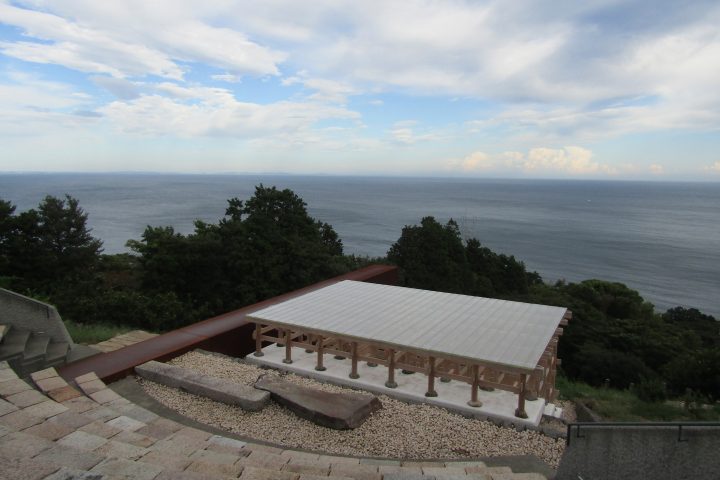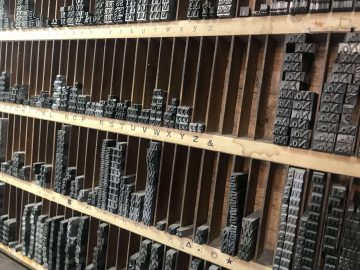Azamino Photo Annual "By the time you think about it, it's no longer in front of you" | Interview with Ryuichi Ishikawa
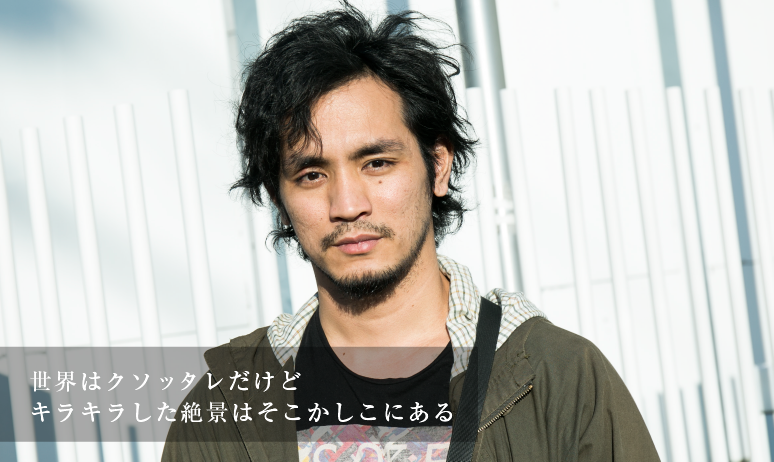
Published on 2016.2.14 Interview & Text: Hiroyuki Watanabe Photo (Portrait): Masamasa Nishino
I first learned about photographer Ishikawa Ryuichi in November 2014. A female friend I met in Okinawa told me, "A friend of mine, an interesting photographer, is holding an exhibition in Shibuya, so go and see it." Ishikawa was extremely drunk when I met him at the venue, just before the printing of "Okinawan Portraits 2010-2012," the work that would later win him the Kimura Ihei Photography Award, was completed, so I later dropped by his solo exhibition at the Ginza Nikon Salon and spoke to him again. Ishikawa appeared from an alley in Ginza with a large backpack and two Hasselblads with digital backs hanging from his neck, and answered my questions slowly and carefully, choosing each word carefully, as befitting someone from Okinawa. I thought he was a sincere person. A year has passed since then. I met Ishikawa for the first time in a while, busy with preparations for his solo exhibition, "When you think about it, it's no longer in front of you." He was as modest, sincere, and kindly moist-eyed as ever, a cool (or is that crazy?) Okinawan "Nii-nii."
Since a photo exhibition is merely a way of marking a point in time, I will simply show all the photos I have taken so far.
"When you think about it, it's no longer in front of you" features Ishikawa's early works from before he was recognized as a photographer, as well as his Kimura Ihei Award-winning works "Polyphony of Breathtaking Views" and "Okinawan Portraits 2010-2012." In addition, his latest work "CAMP" will be on display for the first time. When I told him that I thought it was the perfect arrangement to get to know the photographer Ryuichi Ishikawa and his world of work, Ishikawa laughed bitterly and said, "It's like a retrospective even though he's not dead," but the intention of the exhibition is simple.
"I just put out everything I can present at the moment. People think about many things at the same time, don't they? The portraits, snapshots and Polaroid photographs in the exhibit were all taken at the same time, and my early works are from a period when I was experimenting with photography, but that hasn't changed even now. There are no answers in photography, but I think that thinking about it is all I need to do. I don't think there's any need to think about the meaning of the exhibition structure now. What people have been thinking will ultimately not be known until the day they die, and nothing is complete at some point. If I had to say, it's like hitting a point where I think, 'This is what I'm thinking now, and this is what I thought at that moment.' I present what is born from facing each moment as honestly and as best I can with instantaneous force. I would like to leave something behind in this way."
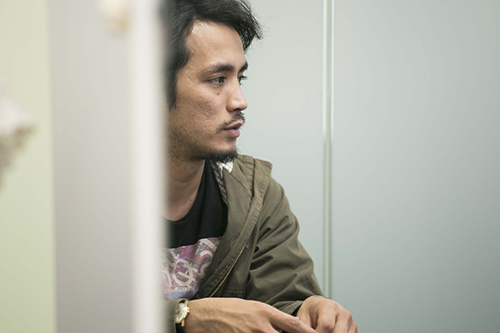
My own imagination is too small to even come close to the polyphony that the world offers.
Among the works on display, "ryu-graph" is unique. This work, created by applying solvent directly to photographic paper, is a direct expression of Ishikawa's inner image, unlike so-called photographs. During the time he was creating the work, Ishikawa hardly met anyone, and stayed at home without taking any photographs. The trigger was an unexpected realization about photography.
"When I first started taking photos, I would snap anything that caught my eye. But when I printed them, they were completely different to the image I had when I took the photo. That's when I thought, 'Photographs don't capture anything.' If you think about it, when people see something, they only feel something after taking into account, for example, what they had for breakfast, the weather that day, the feeling of the air, the smells they smell, etc. Because those experiences are different, you don't feel the same thing when you see the same thing. So I thought that if I combined various images, I might be able to convey what I was thinking, and so I started making composite photographs ('Brain Portraits'). From there, I became interested in what would happen if I messed up what I was thinking and did whatever I wanted, without any rules, so I tried all kinds of methods, such as multiple exposures, collages, burning film, and changing the procedures for using developing solutions and other chemicals. Before I knew it, I stopped taking photographs altogether."
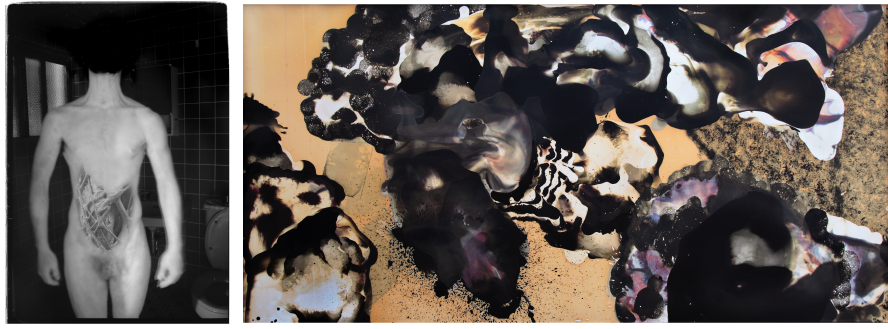
Image on the left: Ψυχή (anima Psyche) / 2007 / gelatin silver print
Image on the right: ryu-graph #0028 / 2009 / gelatin silver print
The frustration of not being able to control the communication gap between the viewer and the viewer that arises in the process from "taking a picture" to "communicating" led Ishikawa to turn to composite photography, which is an easy way to express the images inside him, and to "ryu-graph." As a photographer, did he discover anything while continuing to create without using a camera?
"It shows just how small the imagination of an individual is. 'Is this all I can do?' I thought I could do something more interesting, but I realized it wasn't anything special. I had ideas, methods and concrete images for how to develop it further, but I thought they were pointless. It seemed like it was over at the stage where you could even imagine what would come next."
After completing "ryu-graph," Ishikawa left the darkroom and began taking snapshots of familiar people, places, and events that occurred there. This would later bear fruit in "adrenamix." "Ingakyo," created during the same period, succinctly represents Ishikawa's shift in consciousness from his limited inner self to the unpredictable outside world.
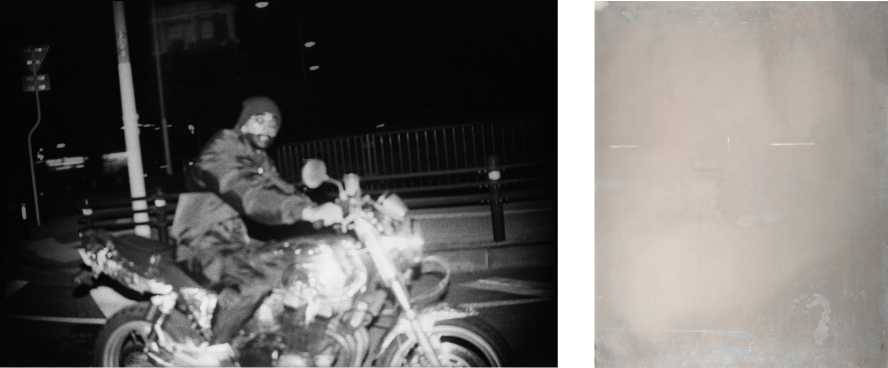
Image on the left: Urasoe, 2009 (from adrenamix) / 2010 / PC, monitor
Image on the right: Print mirror 02 / 2010 / Gelatin silver print
"I wanted to capture something from the outside world on photographic paper once again."
In silver halide photography, the image is developed and fixed by utilizing the chemical reaction that occurs when light is applied to the silver coated on the photographic paper. The "photographic mirror" is a mirror made by applying the chemical reaction of silver in the development process to monochrome photographic paper. The mirror reflects everything outside. The image changes every moment, and it is impossible to predict what will be reflected in the next moment.
I vividly remember when I first heard him speak in Ginza, I felt that this man might be trying to become a "giant image sensor" that captures everything in the world. Ishikawa's strong desire to "photograph anything" is apparent in "Ingakyo."
Regardless of the time or place, I press the shutter, trembling with the power of "friction" emitted by the subject.
The defining feature of Ishikawa's photographs, seen in "Polyphony of Breathtaking Views" and "Okinawan Portraits 2010-2012," can be summed up in one word: their "vivid rawness."
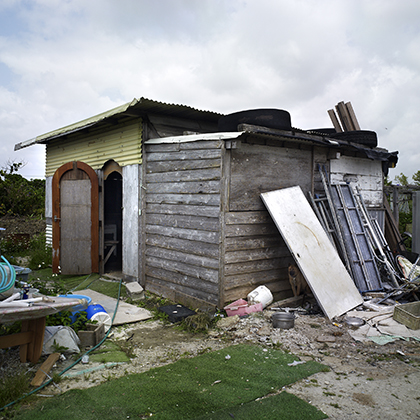
Yaese, 2014 (from Polyphony of Breathtaking Scenery) / 2014 / Inkjet print
A barrage of heavy images, evoking the strong smell of rotting fruit in the hot, humid air of the tropics. There is a grain of truth in the saying that "a photograph only captures what is there," but there is definitely something there. What does Ishikawa see, and when does he press the shutter?
"I don't really think too deeply about what I'm looking at, but at a photo exhibition or event I was once asked, 'When do you take photos?' and I answered, 'When I feel like I'm alive,' or 'This is crazy!' That leads to my latest work, 'CAMP.' To begin with, I wasn't interested in forests. I went along with the idea because it was something beyond my imagination, and I wanted to try it, but when I entered the forest I didn't know what to photograph. But nothing would start unless I photographed something, so I photographed. After developing, printing, and looking back at the images over and over again, the works I ultimately chose were 'Polyphony of Breathtaking Views' and 'Okinawan Portraits In the words used at the time of "2010-2012," the image was one of "being alive!" If I had to put it into words now, I'd say it's the force of "friction" when something moves. The friction that arises when animals are there, or the friction when water flows and carves rocks. That's what's interesting. The greater the force of friction, the more it feels like you're shaking. In the city, there is physical friction when people pass each other, but there is also emotional and sentimental friction. The events and experiences that occur in life may directly represent the friction that arises within a person. That's what it means to be alive. I think it's an accumulation of friction."
Among the people Ishikawa photographs, there are some who at first glance appear eccentric, and others who are ordinary. However, one thing they all have in common is that each model stands out as unique.
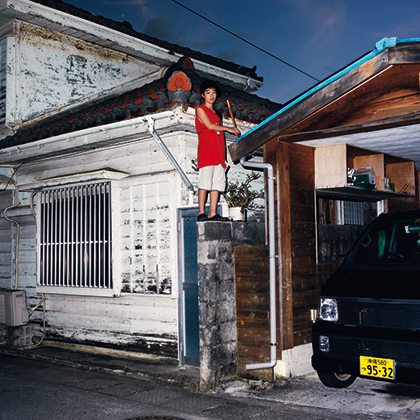
OP.001143 Naha (from Okinawa Portraits 2010-2012) / 2013 / Inkjet print
"When it comes to portraits, ultimately you are looking at an individual. But in reality, the individual may not be looking at them either. There are most things you don't know when you take a photo. However, and this is something I regret, I tend to be biased towards looking at things that are unique. In reality, the more time I have, the better. Then I won't be fooled by appearances. If I have time, I won't try to take the easy way out, the easier option. I think that's dangerous."
In an interview with a magazine, photographer Shinya Fujiwara said, "I think we are now in an era where groups, not individuals, are the face of things." Since the 2001 terrorist attacks in the United States and the Great East Japan Earthquake and subsequent nuclear accident in 2011, "we are in an era where we don't know what will happen in five minutes," and people try to ensure security by gathering in groups. Symbolizing this is the popularity of group idols such as AKB48, and Fujiwara sees the phenomenon they create as a shelter for today's young people who are anxious about the future.
Indeed, AKB48 and EXILE dominate the top of the J-POP charts, and walking down the street you pass by a lot of young people dressed like clones. It's hard to find individuality in that appearance.
However, in the midst of what Fujiwara calls "an era in which the herd becomes the face," Ishikawa, who has been taking portraits since discovering photography as a means of expression, does not take any portraits of AKB48 or EXILE. Each person's presence stands out, and they each give off a strong, unique body odor. If the accumulation of "friction" that Ishikawa talks about creates an "individual face," then the models he selects are people who, whether they are aware of it or not, have lived their own lives, for better or worse. Ishikawa responds to the vibes emanating from the friction they have accumulated, and releases the shutter. The viewer is stabbed by the momentary reflection of the existence of human beings, which should be unique and diverse, but which has become difficult to see in the shadows of the times, and feels a vivid vividness.
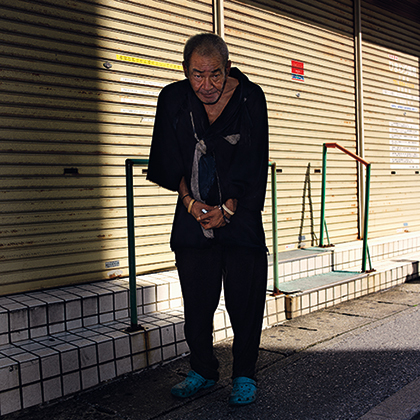
OP.002187 Naha (from Okinawa Portraits 2010-2012) / 2012 / Inkjet print
Photography is a medium that inevitably captures the characteristics of the era and place. How does Ishikawa view the relationship between his photography and the era and place?
"Thinking about the situation of the time and place is something I can think about when I look at the photographs, and for me, thinking about it beforehand is meaningless. Maybe imagining those kinds of elements in advance is already a no-go."
Being conscious of the time and place beforehand when taking a photograph may be nothing more than a hindrance to taking photographs, and a noise that clouds the way Ishikawa sees the world, just like his own broad-minded imagination that he came up against in "ryu-graph."
Living is always a struggle, and stability is fleeting, just like the people on the street.
"CAMP" is a series of photos taken by survival climber Fumiyoshi Hattori, who went into a deserted forest with only his filming equipment and the minimum equipment necessary to survive. Filming took place in June last year in the source area of the Sai River in Ishikawa Prefecture, and in September in the Waga mountain range in Akita Prefecture.
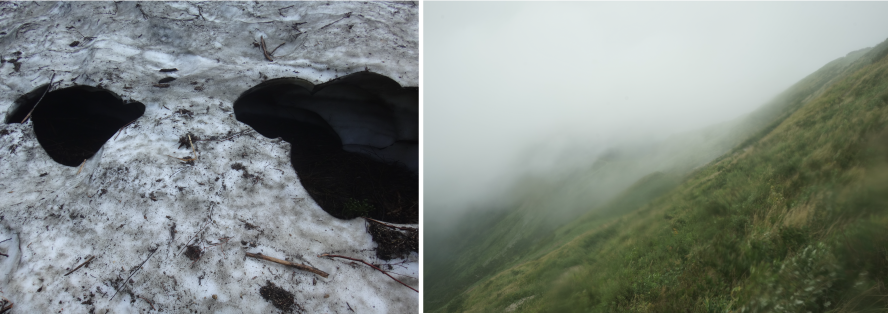
Image on the left: C.09 (from CAMP) / 2015 / Inkjet print
Image on the right: C.43 (from CAMP) / 2015 / Inkjet print
For Ishikawa, who has mainly been photographing Okinawan people and towns, this was his first attempt at shooting in a place where there are no traces of human life, such as a virgin forest. What kind of feelings did Ishikawa have when he found himself in a shooting environment that was the complete opposite of his usual one?
"I was bewildered to see something so different from what I'm used to. I didn't know what to photograph. There were no roads, no people, no burger restaurants. There was nothing I see every day, so I didn't know what to look at or how to look at it. So all I could do was press the shutter. I didn't feel like I was taking pictures at all, and I no longer knew why I was taking pictures."
The scene that remains most vivid in his memory during filming was when he was crossing a snowy valley on the Sai River and his footing gave way, nearly killing him.
"Hattori told me, 'The snowfield is small, so if we don't walk one at a time, it will collapse and we'll both be finished.' So as I started to follow Hattori's invisible back, who was walking ahead of me, the snowfield beneath my feet began to collapse. Falling would mean death, so I ran desperately across the snowfield, which was crumbling like something out of a manga. But I had to take a picture here, I had to capture this fear and my feelings in a tangible form, so I turned around and pressed the shutter. When I checked the image, I found that the camera had malfunctioned and it hadn't come out properly. It was as if the image with the bug was in sync with my mental state at the time."
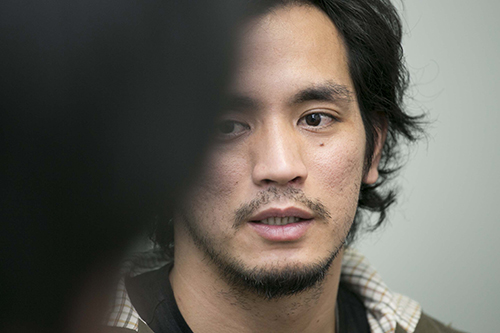
Human consciousness undergoes profound change only when one encounters different places, times, and people and immerses oneself in them. Did the experience of leaving the town, where people live, and placing one's body in bare nature have any impact on Ishikawa's perspective on the world?
"What I've realized is that the city and the mountains are the same. There are differences in specific, detailed aspects, but they're all still alive. That's both amazing and frightening."
I can honestly understand the feeling that it's amazing. But what does it mean to be scared?
"What I'm saying is that there is no such thing as safety or stability anywhere. Living is always on the edge, and that's normal. If you try to stabilize one area, a deviation will occur somewhere else. Stability only lasts for a moment. Humans have created comfortable environments in which to live, but as a result, something else collapses. Hattori writes in his book that 'eating and being eaten go hand in hand. If you eat, you will eventually be eaten,' but the mountains were really the same. I thought that this was no different in the city. People should know this, but they still seek a continuation of a stable everyday life that is merely an ideal, and think about things like safety. I wonder what that is all about."
I thought of 3/11. Humans have built civilization to obtain stability and safety. However, if even one minute balance is lost, ironically, we will be killed by the civilization we created. There is no guarantee that we will be alive in one second, let alone five minutes. That is the cold reality. Despite this, we spend our days immersed in the illusion that these peaceful days will continue forever. Is this what I feel resentful about?
"We're shitty for living our lives without even realizing it, but we can't help but desire safety and stability, and it's also shitty that these ideals don't come true in reality. It's a contradiction."
I think it's better to "take on" the world, rather than just accept it.
"Many photographers actively seek to capture a moment in order to capture a meaningful image. In contrast, Ryuichi Ishikawa is a photographer who places the core of the act of taking a photograph on how to embrace the situation at hand."
This is an essay by Himeno Nozomi, the president of Akaaka Art Publishing, the publisher of "Polyphony of Breathtaking Views," "Okinawan Portraits 2010-2012," and "Adrenamix," and one of the people who knows the photographer Ishikawa Ryuichi best. "Acceptance" is one of the keywords that describe Ishikawa.
However, Ishikawa himself has always felt uncomfortable with the word "accept."
"It's true that I've said things like, 'Photography and cameras are a way to accept what is in front of you, a way to think about it.' But in reality, there was always something that felt strange, or something that didn't make sense to me. Then, I happened to read Sartre's Nausea, and I came across the phrase, 'Rather than accepting what happens to you, take on what happens to you.' And it's been bothering me ever since. I thought 'taking on' would be more correct than 'accepting.' Using the word 'accept' feels like I'm pretending too much like it has nothing to do with me. The image is like throwing something carelessly into a container. But when you accept something, there is at least a little emotion involved, and even if you think you're accepting it, there is an unconscious part of you that is choosing it. So I began to think that 'taking on' might be the correct word in terms of meaning. I can't see it clearly yet, so I can't say any more than that at the moment. It's just an intuitive feeling, but I think this realization will be a big point for me in the future."
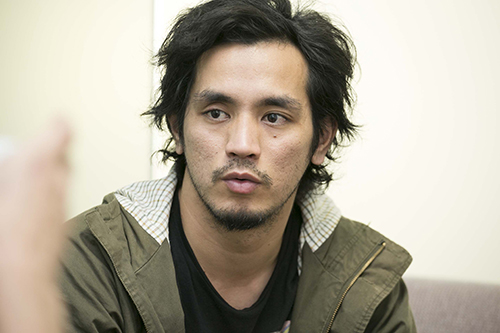
The difference in meaning and nuance between "accept" and "take on" probably lies in the difference in the activeness of facing others and the burden that comes from it. Accepting is enough if there is another person, but taking on something requires deep involvement. There is a significant difference in the calories expended there.
If Ishikawa's activities thus far have been characterized by hitting a wall in his own expression and then recovering his connection with the world through photography, then going even further, that is, deepening his perspective from that of a watcher to that of an actor, overlaps with the process of human growth, just as a baby who can only express himself by crying grows into a boy and then a young man, and matures into a man amid friction with a society that is by no means all beautiful.
At the end of the exhibition, works taken with a Polaroid camera are displayed. This series, which has the same name as the exhibition "When I think about it, it's no longer in front of me," is a continuation of "Polyphony of Breathtaking Views" and "Okinawan Portraites 2010-2012" from the same period, and the subjects of the works are people and things rooted in Ishikawa's daily life, such as friends and food.
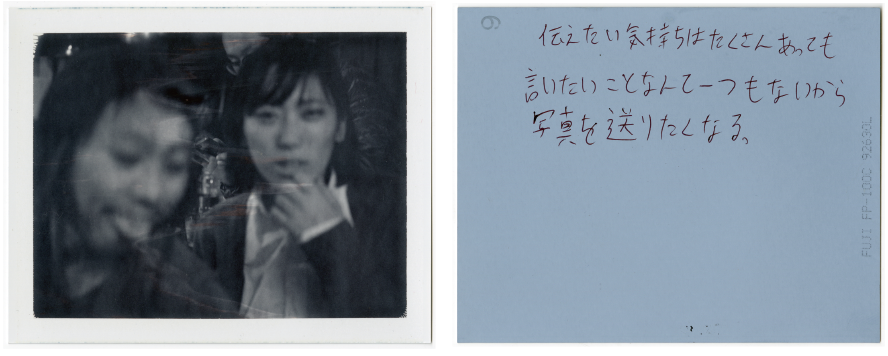
By the time you think about it, it's no longer in front of you / 2014-2015 / Peel-apart type film
"With Polaroid, you talk to the person you're photographing, and you take the picture in an atmosphere where you feel like you have a mutual understanding. It's like capturing an extremely personal, intimate relationship. Those kinds of things are invisible, immeasurable, and disappear in an instant. Also, unlike prints, they can't be reproduced, so only one copy remains. I thought Polaroid was the perfect medium for capturing things that only last for a moment."
Indeed, this suits the characteristics of instant film, where the image gradually deteriorates and fades away without ever becoming completely fixed from the moment it is taken.
"I take two pictures, one for myself and one for the person I'm dating. I'd write a message on it and give it to them as a gift. I think it started with Robert Frank. I think anything can become a photograph. But I felt like I hadn't yet been able to capture that feeling of intimacy in a photograph. It's what they call 'friend photography.' It's the same as when young people take pictures of familiar things with their 'Instax' cameras."
Taking a photograph is accepting the world outside of oneself. The last piece at the exhibition hall is a photo of a friend taken with an instant camera, which is typical of Ishikawa. One year after his brilliant debut, Ishikawa is surely about to step onto the first step of the stairs to the next stage. The image of Ishikawa's back as he took the picture while saying "Humans!" comes to mind.
